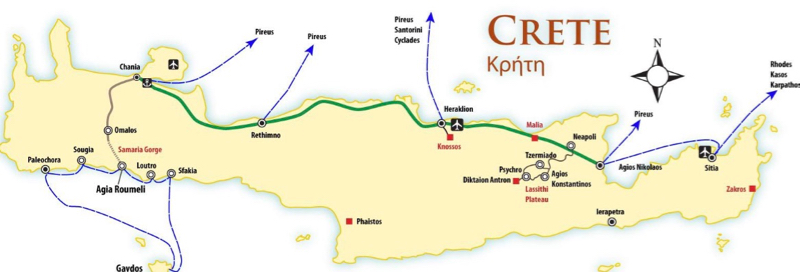
Map of Crete - we visited Chania (NW), Heraklion (N center), and Knossos (S of Heraklion)
|
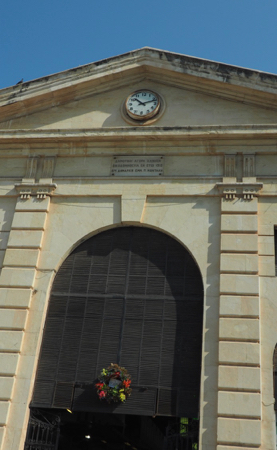
Entrance to the Marketplace
|
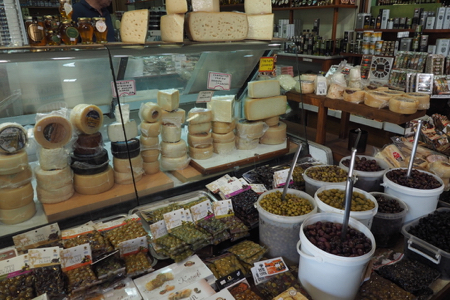
Market photos - my camera just can't resist markets |
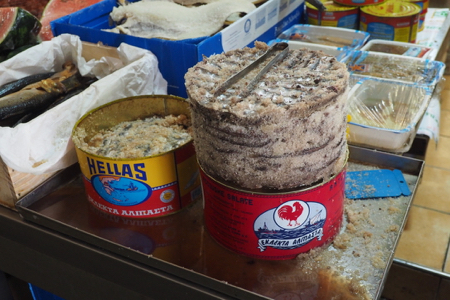
|
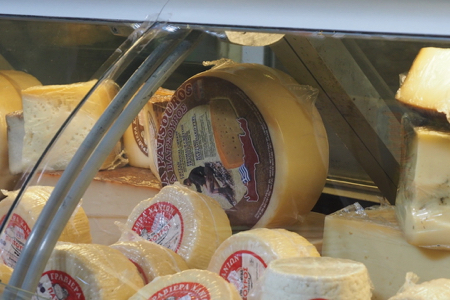
|
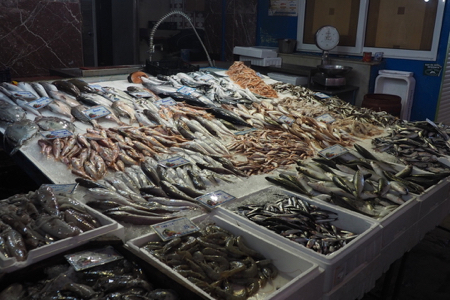
|

|
We walked around through narrow streets and alleys to look at the old houses and all of the jasmine and bougainvillea and other flowering plants growing from flower pots up the sides of houses. We passed the Greek Orthodox Cathedral of Agios Nikolaos that was built as a Dominican Monastery in the Venetian period before 1320. In 1645 it was transformed into a mosque and the minaret added.
We stopped in front of a statue of a man dressed in traditional clothes. He was a Turkish Freedom Fighter from the last revolution against the Ottoman Turks. Crete then voted on a referendum to join Greece.
Finally, we stopped under a huge plane tree (Sycamore) and had coffee. The six of us were ready to fall asleep on our feet. The Nescafé perked us up.
|
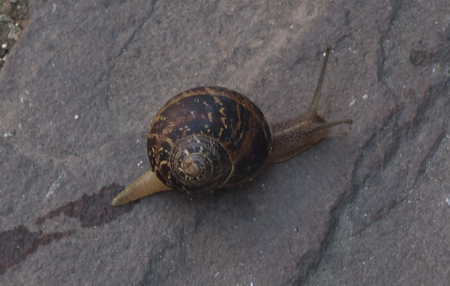
Wildlife |
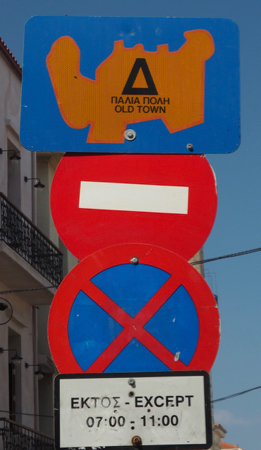
Interesting sign
|
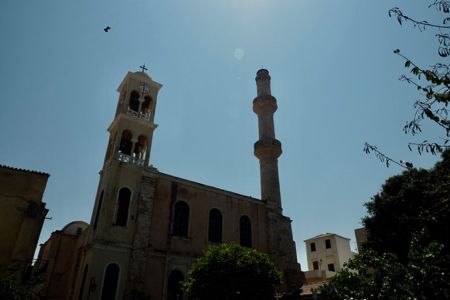
Greek Orthodox Cathedral of Agios Nikolaos
|
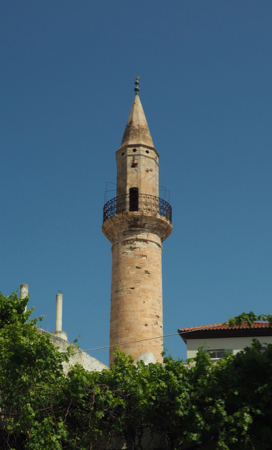
Minaret of of Agios Nikolaos
|
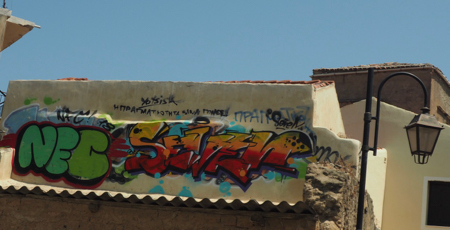
Graffiti |
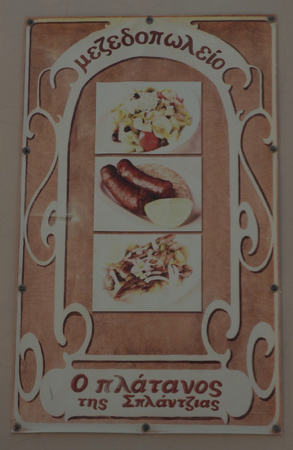
Restaurant sign
|
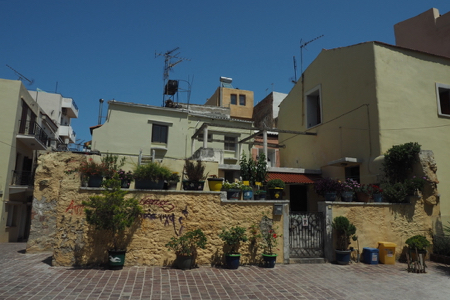
Street scene |
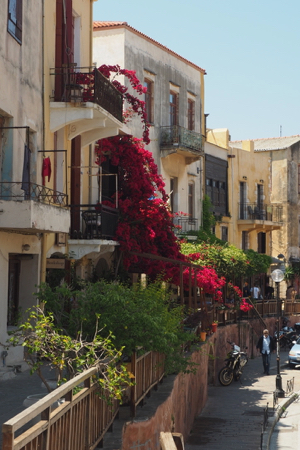
Street scene
|
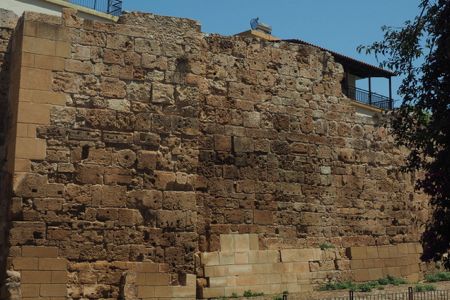
Byzantine walls in Chania |
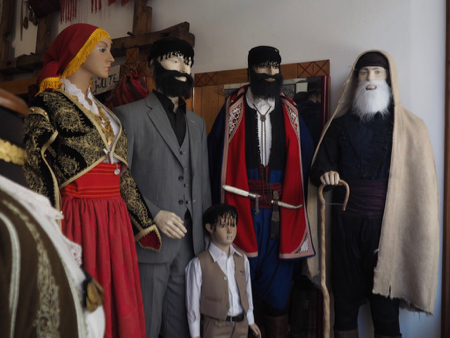
Traditional Cretan costumes
|
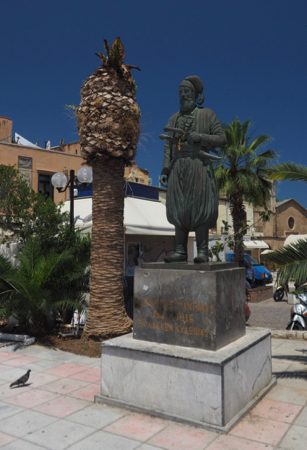
Turkish Freedom Fighter
|
By 11:30 we got to the Archeological Museum. The building was once a Franciscan monastery. Maria explained some of the exhibits. All are finds on the island of Crete, many from the Minoan civilization, and in “mint” condition. Photos were impossible due to the lack of light. Also, there was an interesting condition for taking photographs in this museum, and on the first floor of the New Acropolis Museum in Athens, - no photos of “new finds”- things which have not yet been “published.”
At 1:30 we got to the old Venetian Port with the fortress (now a Venetian naval museum) to the west and a lighthouse made from an Ottoman minaret on the east of the inlet to the small bay. We had lunch at Plateia Restaurant, looking at the bay. Our salads were each big enough for a family of four!
|

|
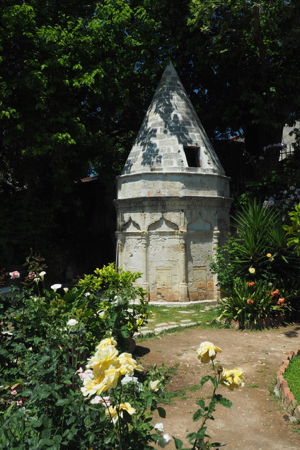
Ottoman fountain at the Museum
|
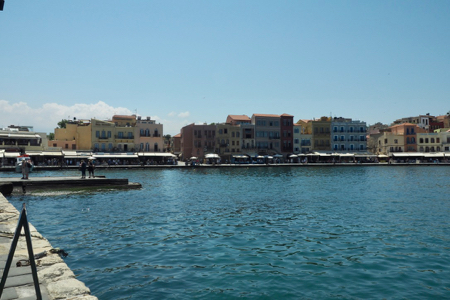
Chania waterfront |
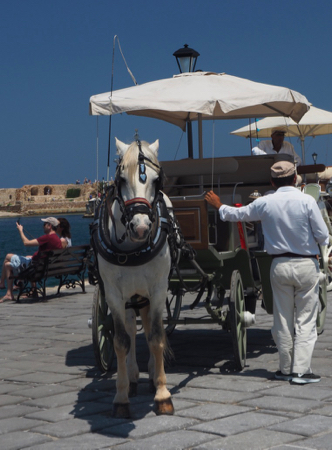
Anyone for a ride?
|

Selling sponges
|
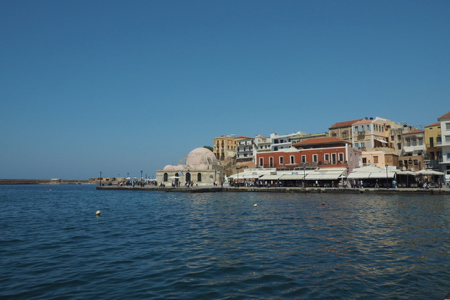
Waterfront |
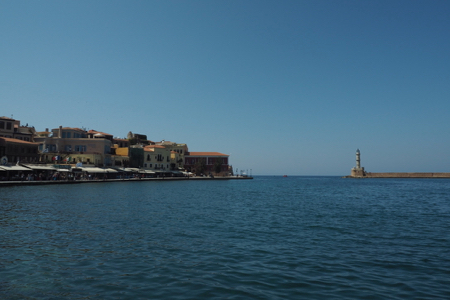
Harbor entry, breakwater, and lighthouse
|
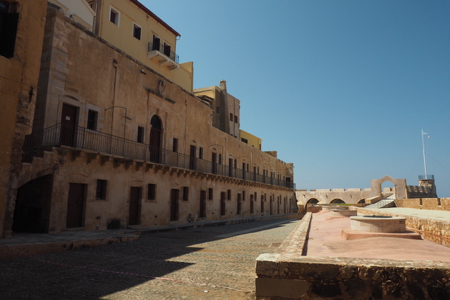
Old Venetian Fort |

Street scene
|
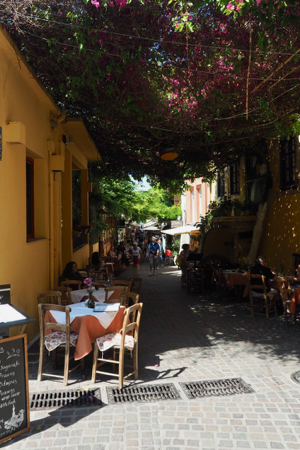
Street scene |
We wandered more and got back to the Kydon Hotel and into our rooms by 4 PM. Later, we all went to dinner at Chuisostomos. Two taxis took us there and we walked back along the old port area and through the old town, which was teeming with people. The old Venetian ship yard buildings now house cafes and shops.
|
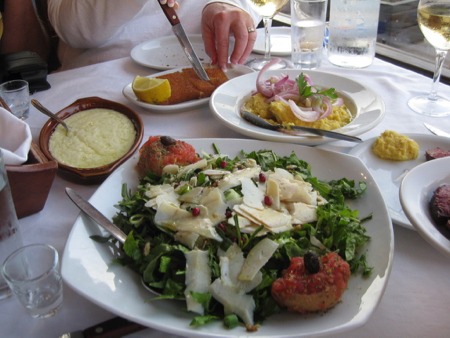
Dinner
|
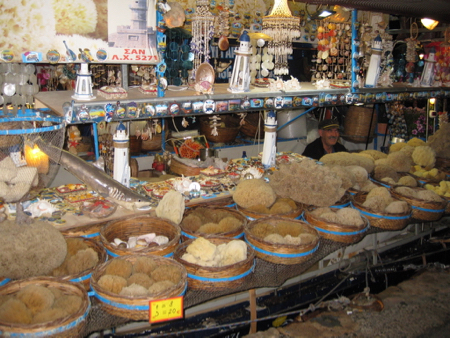
Sponges
|

Sponges |
Wed., 5/9/18 - Chania, Crete
Our minibus drove us south into the hills of Crete. (The highest peak is 8,000+ feet.) The road was narrow and winding with lots of switchbacks. We arrived at the Botanical Park and Garden and Restaurant that sits up on a steep slope that was once a huge olive grove. In 2003 a huge fire consumed the whole area. The owner decided to replant with plants (mostly fruit and citrus trees and medicinal plants, herbs, and spices) from around the world. His hillside includes three climate zones so almost everything can grow here. His aim is to show the present generation where our food and medicine come from instead of from the supermarket. This park/garden was opened in 2010.
Before we hiked in the garden, we had a cooking lesson. The Cretan diet consists of five things: olive oil (lots and lots of olive oil), wine, vegetables, and fruits and no recipes, just prepare whatever is currently growing naturally in your garden. So we cut up peppers, eggplant, squash, and onions that our chef/instructor had picked this morning and prepared “sympathetio.” The big chunks were put in a baking dish, sea salt was sprinkled liberally on top, and then olive oil added so it filled 3/4 of an inch in the bottom of the glass pan. This he would cook at 300° for an hour. We also stuffed grape leaves, zucchini flowers, and more squash, peppers and tomatoes with a combination of rice and herbs. (The chef added more water because the rice was uncooked.) This was covered with aluminum foil and also baked at 300°.
|
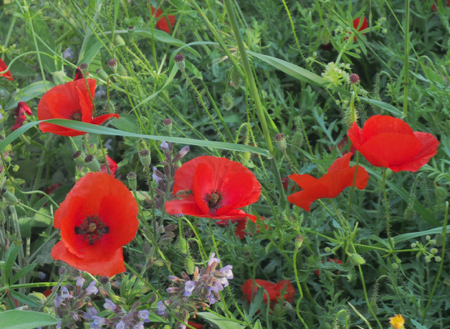
Poppies
|
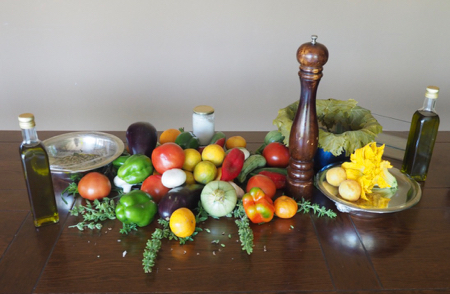
The ingredients |
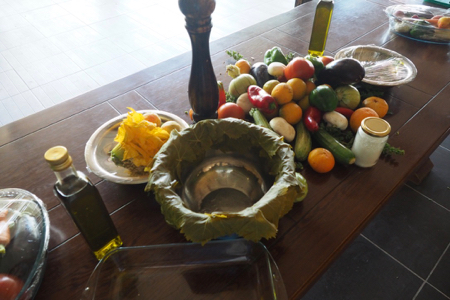
The ingredients
|
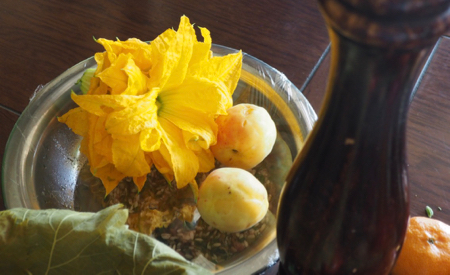
The ingredients |
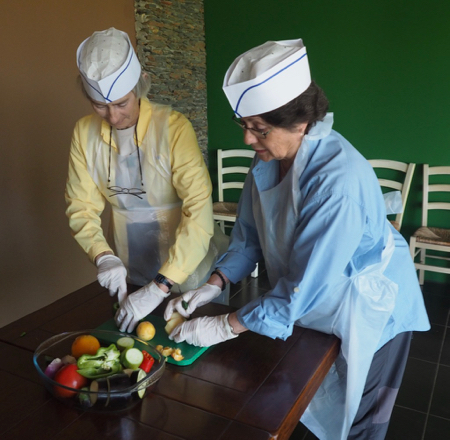
The preparation
|
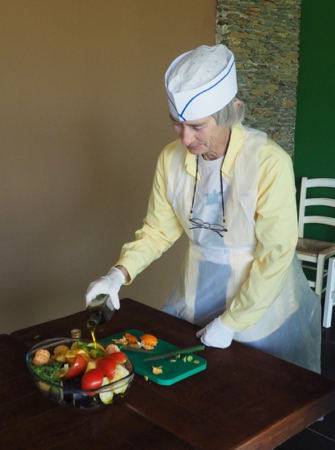
|
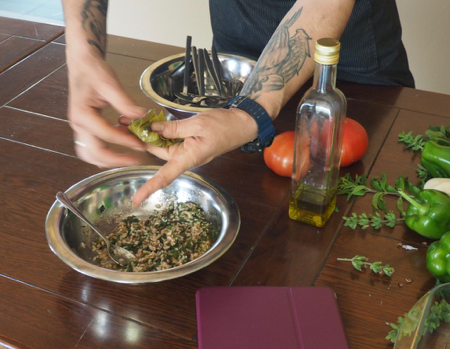
Stuffing the grape leaves
|
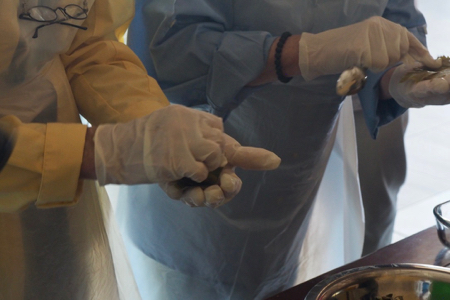
|
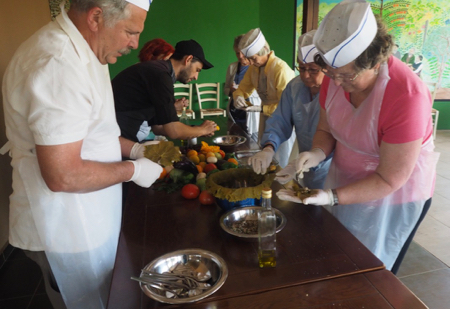
|
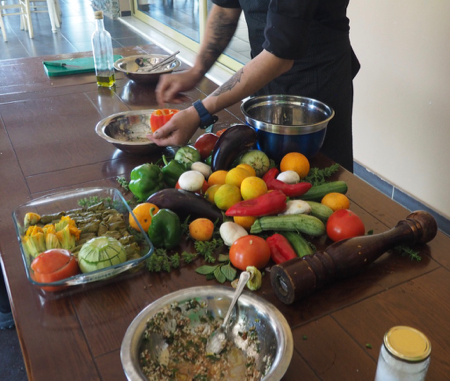
|
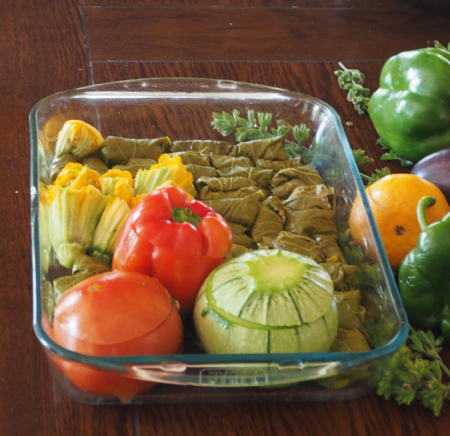
|
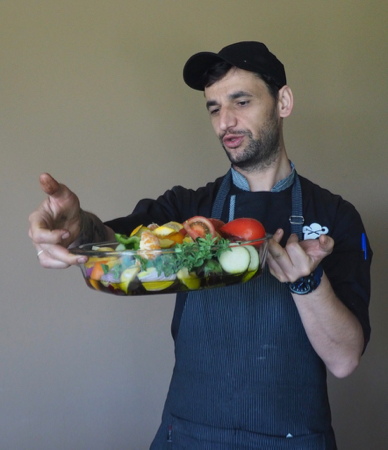
Ready for the oven
|
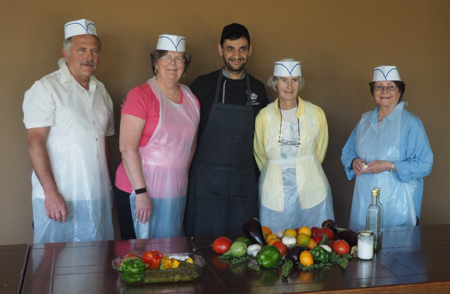
The Cooking Crew |
While this cooked we took the 1 1/2 hour walking trail down through the garden and back up to the restaurant. Hundreds of trees and plants were identified with plaques with botanical names, origin, medicinal uses, and such, in Greek and English. He has collected plants from all over the world and others have been given to the project. There was even one five foot Colorado blue spruce “from the Rocky Mountains of the USA.” Four of us walked all of the route. At the bottom is a lake and a population of peacocks and hens and some guinea fowl, Canadian geese, a turkey, two vultures, a donkey, and a mule. A man was collecting oranges from the abundant crop on the small trees near the bottom of the hike.
Our lunch was ready when we reassembled at the top. We were served our two dishes plus about six more and again could not possibly eat it all. It was a very interesting experience.
|
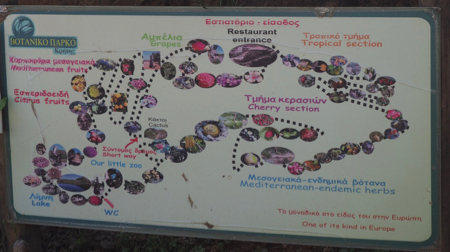
Map of the Botanical Garden
|
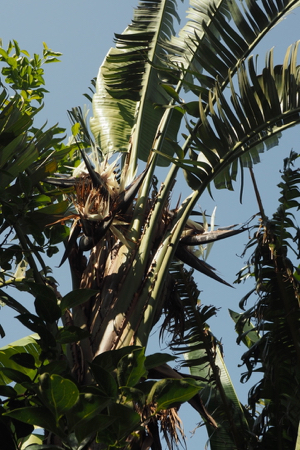
|
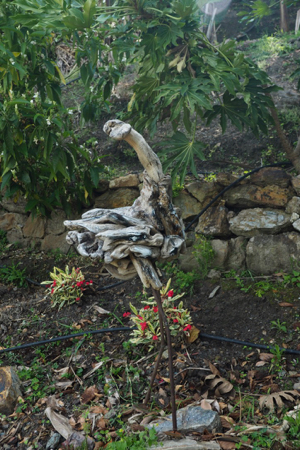
|
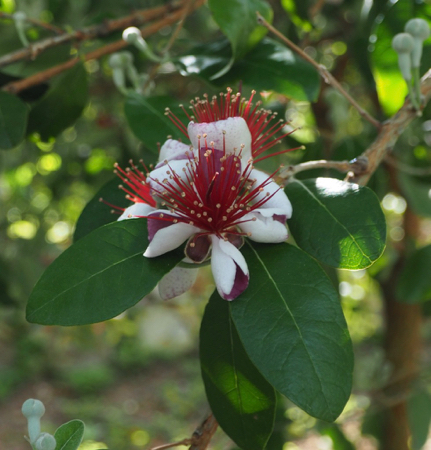
|
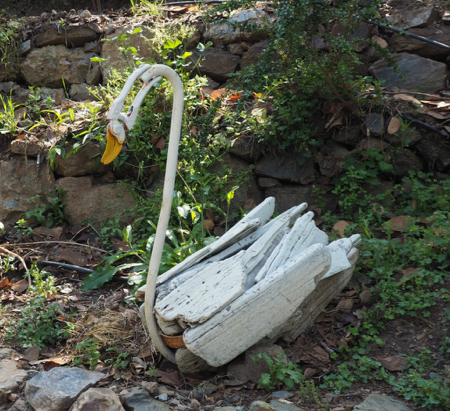
|
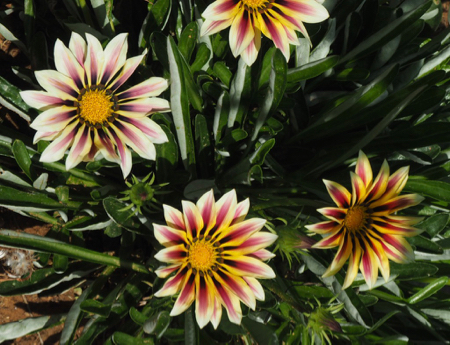
|
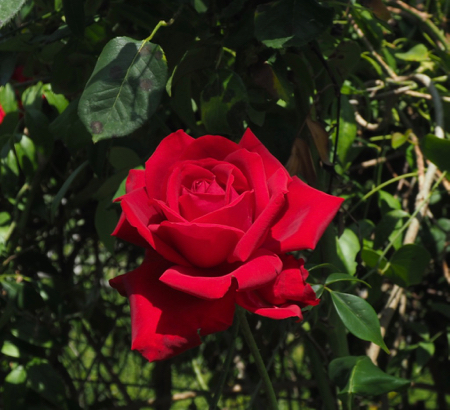
|
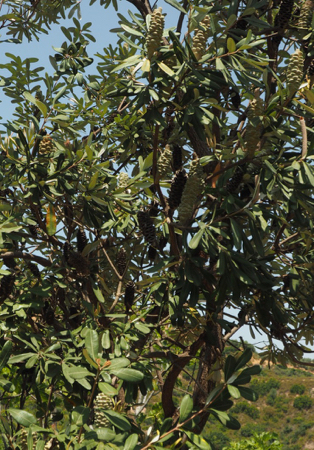
|
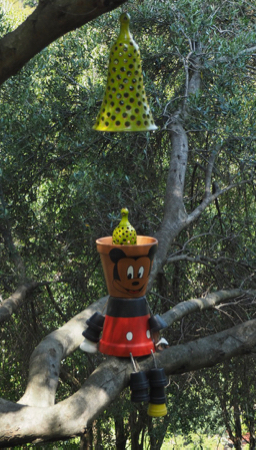
|
When we got back to Chania, Marge and I went looking for a Crete spoon. We were lucky to find one in the third stall of the huge town market across the street from our hotel.
At 7 PM we all walked into the old town and stopped for gelato and called it dinner. The waterfront was lovely at night.
|

Sitting by the bay
|
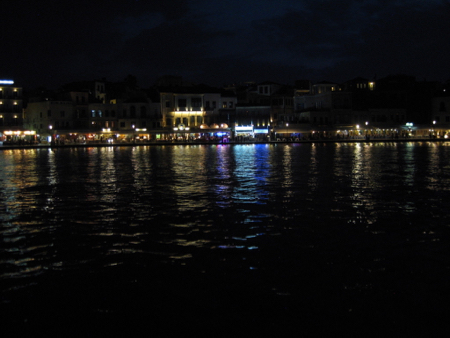
Lights of Chania |






















































